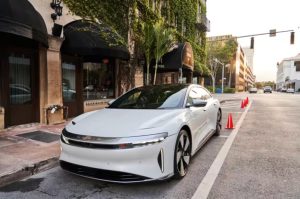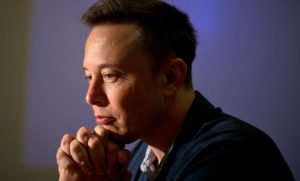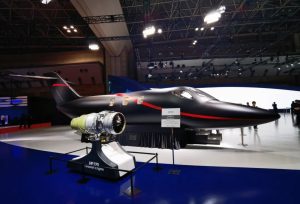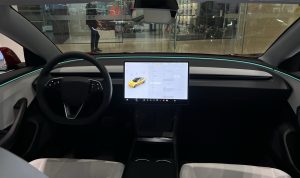The New Model 3’s Adventurous Positioning: From ‘Road Racing’ to ‘Mobile Home
6 min read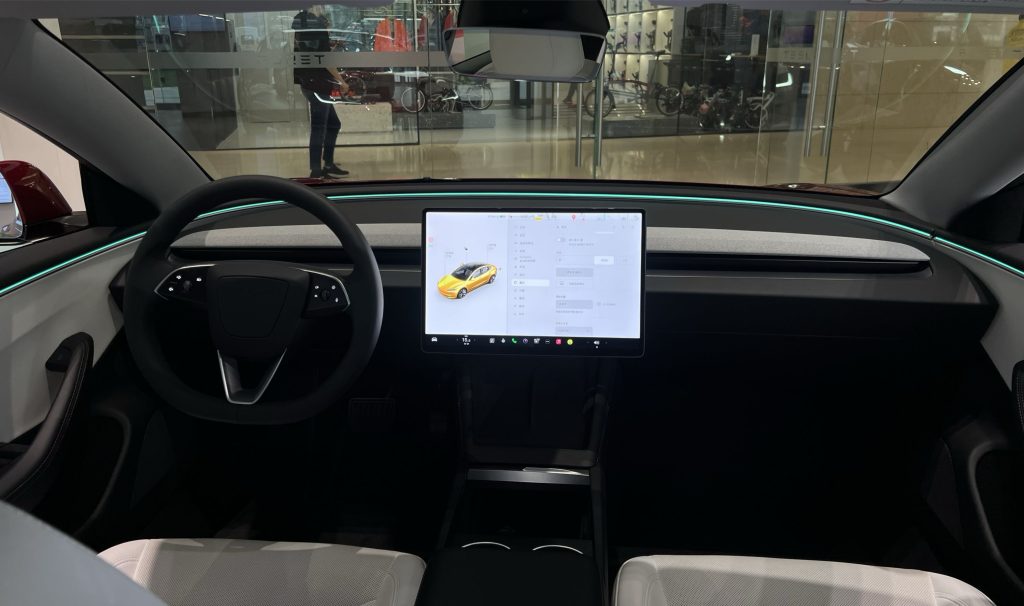
“The handling doesn’t feel as pure; it has lost the precision it once had,” said an owner of the old Model 3 who recently got the new version
As a pure electric sports sedan, the old Model 3 was often considered a competitor to the Porsche million-dollar electric model Taycan. However, the redesigned Model 3 seems to have abandoned its most iconic experience, with the most noticeable change being a reduction in sportiness.
Renewed Model 3
From ‘Road Racing’ to ‘Mobile Home’
According to the specifications, the 0-100 km/h acceleration time and top speed of the standard range version have both increased compared to the old model. In actual driving, the owner can clearly feel that the once strong sense of acceleration has been diminished. The new Model 3 has a slower acceleration in the 0-50 km/h range, with a smoother and gentler start. The sustained feeling of acceleration is shorter, giving the sensation of a high-speed train – smooth and steady.
Model 3 Specification Comparison
An owner who experienced the new Model 3 commented, “The new model still provides an acceleration experience, but the old model was just too extreme. Now, the Model 3 feels similar to driving other brand electric cars.”
In terms of chassis and steering, the tuning of the new Model 3 also leans towards comfort. Significant efforts have been made to improve the suspension, reducing the “bouncy” feeling that was present in the past. The vibrations and noise from small stones on the road have been significantly reduced. The introduction of steer-by-wire technology filters out tiny movements of the steering wheel below 2 degrees, easing the phenomenon of “jerking” during steering. The changes in the chassis are reminiscent of the Model Y, moving away from a light and nimble driving feel to a sense of solidity and resilience.
In summary, the new Model 3 has taken a departure from its original sporty positioning, moving towards a more comfortable and less aggressive driving experience. This shift in focus seems to suggest a move from being a “road racer” to a more relaxed “mobile home” on wheels.

Refreshed Model 3 Interior and Seats
The regenerative braking force in the Tesla has also been further controlled. When releasing the accelerator pedal, it is clearly noticeable: the vehicle’s coasting distance has increased, and the drag sensation has significantly diminished. Clearly, Tesla’s signature “single-pedal” functionality, which has been controversial, has now become a thing of the past.
Beyond driving dynamics, the new model has undergone several changes to enhance the overall passenger experience:
- The front seats now feature added ventilation functionality.
- Ambient lighting has been introduced to the car’s interior.
- The audio system in the Long Range version has been upgraded to include 17 speakers.
- Windows have been upgraded to double-layered glass.
- A new entertainment screen has been added to the rear seats.
These adjustments aim to improve the comfort and convenience of the Model 3, providing a more enjoyable and feature-rich experience for occupants.

Refreshed Model 3 Rear Screen
The value proposition of the new Model 3 is almost exclusively focused on comfort, a shift that is not hard to understand. The previous Model 3, with its low center of gravity, tight chassis, responsive steering, and excellent grip, was often referred to as an “electric toy” for a long time.
However, the pursuit of driving pleasure often means sacrificing comfort: severe nodding during braking, overly responsive steering, significant bouncing over speed bumps, and noticeable discomfort on slightly uneven road surfaces. An owner of the older Model 3 mentioned, “When the road conditions are bad, the whole car is bumpy and noisy, making it a bit awkward when carrying passengers.” The lack of comfort made it challenging for the older Model 3 to capture a larger market share.
In the Chinese market, the steadily growing premium brand, NIO, is targeting the most rigid consumer group—families. The promotional posters for the new Model 3 boldly label it as a “mobile home,” aligning with NIO’s company slogan. To compete for the primary market and clientele, the changes in comfort are almost a necessary path for the new Model 3.
Is the less aggressive Model 3 still a Model 3?
In March 2016, a week after the Model 3 was launched, orders reached 325,000. After Tesla ramped up production capacity in 2018, the Model 3’s sales in North America even surpassed the entire Mercedes-Benz lineup.
The new exterior design led the way in electric car design; removing the instrument panel brought the focus back to the essentials—consumers began to believe in Musk’s first principles; the responsive handling brought a high-performance luxury car driving experience to electric vehicles; and the market-leading AutoPilot intelligent driving assistance system at the time allowed consumers to envision the possibilities of “smart” cars.
The labels of technology and intelligence, coupled with a clear positioning as a sports sedan, allowed the Model 3 to capture a particular group: young people seeking handling with minimal space requirements, families purchasing a second car, and users interested in electric cars due to the new energy trend.
Many users who hesitated between a BMW 3 Series and a Model 3, after buying a Tesla, affirmed that the Model 3 “overwhelms similar-class gas cars” in terms of driving experience. Bloomberg previously interviewed a thousand Tesla owners, and even after five years of ownership, satisfaction with the Model 3 remained high, with performance being the most praised aspect.
The success of the Model 3 lies not only in sales but more importantly, in establishing a benchmark for the driving experience of electric cars in the 200,000 to 300,000 RMB price range. The new Model 3, which subtracts from the driving satisfaction that existing users are most satisfied with, in a sense, “loses its soul.”
Can the new Model 3 reshape its glory? Price is key
In the 200,000 to 300,000 RMB price range, the selection of models is almost the most abundant. For gasoline cars, there are a batch of B-segment cars that have remained popular for decades, and entry-level models from BBA can also be chosen. The new energy market is even more competitive.
For performance-oriented consumers, the Model 3 is no longer as far ahead as it was six years ago. In the single-motor rear-wheel-drive version, cars like the Deep Blue SL03 and the Geek007 will have vehicles with 5-second 0-100 km/h acceleration priced below 200,000 RMB. In the dual-motor all-wheel-drive version, the performance version of the XPeng P7, priced at 289,900 RMB, achieves a 0-100 km/h acceleration of less than 4 seconds, and the price of the 4.3-second acceleration Seres C01 is only 208,800 RMB, while the similarly performing new Model 3 Long Range is priced at 297,400 RMB and is expected to increase further in the near future.
In the fiercely competitive market for comfortable family cars, the cruel market has gradually tamed new energy vehicles in this price range into “bucket cars.” With a price similar to that of a midsize sedan Model 3, what kind of car can you buy?
The Wuling Journey M7, starting at 249,800 RMB, provides a space one level up, with second-row seats equipped with ventilation, heating, and massage functions, and the extended-range model has a comprehensive range of up to 1300 km. The BYD Han EV, which has a similar range to the new Model 3 rear-wheel-drive version, is priced at only 229,800 RMB. It is more spacious than the Model 3 in terms of body size and wheelbase.
Quality, comfort, and economy are the three major decision factors for family cars. Under the premise of similar prices, consumers are pursuing higher range and more space.
It is worth noting that the Model 3’s biggest competitor is actually the Model Y. The current starting price of the domestic Model Y is 266,400 RMB, while the Model 3 is 261,400 RMB. Excluding brand differences, with only a 5,000 RMB difference, the Model Y provides an upgraded space and riding experience, almost overshadowing the Model 3.
Due to Tesla’s frequent price fluctuations across its entire lineup in recent years, consumers already have a “rough idea” of Tesla’s costs, whether it is the cost of the vehicle itself or the final price of the new Model 3, 261,400 RMB is much higher than consumers expected.

Tesla’s Refreshed Model 3
In 2017, Tesla officially delivered the Model 3, setting a new standard for the performance and intelligence of electric vehicles. It marked the realization of Elon Musk’s grand plan’s second chapter: Tesla’s transition from a high-end performance car company to the mass market. Despite facing production hell, Tesla emerged from the crucible of the automotive industry, claiming the title of the world’s most valuable car company.
Six years later, the refreshed redesign of the Model 3 is, to some extent, a reflection of Tesla’s corporate destiny. Stepping out of the realm of ultimate performance, Tesla is charging into a broader market. However, Chinese brands aggressively targeting the household market have raised the bar for the features of family cars. The Model 3, entering the comfortable family car market, is now facing even fiercer competition.
